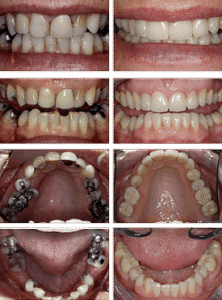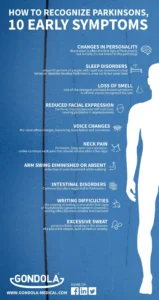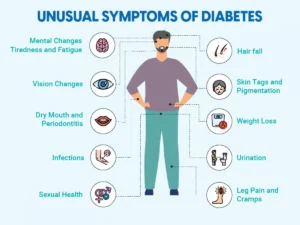Osteoarthritis vs. Arthritis_ What’s the Difference_
Osteoarthritis vs. Arthritis: Understanding the Differences
Introduction: Osteoarthritis and Arthritis Explained
Osteoarthritis (OA) and arthritis are often used interchangeably, but they are not the same. Arthritis refers to a group of over 100 joint diseases that cause inflammation in one or more joints, while osteoarthritis is a specific type of arthritis. While arthritis affects tissues around the joints and other connective tissues throughout the body, osteoarthritis is typically a degenerative condition, often referred to as “wear-and-tear” arthritis. OA results from the breakdown of cartilage—the flexible tissue that covers the ends of bones where joints are formed.
How Common is Osteoarthritis?
Osteoarthritis is widespread, affecting approximately 32.5 million adults in the United States. It is the most common form of arthritis, followed by rheumatoid arthritis (RA), an inflammatory form of arthritis that can damage joints and impact organs and connective tissues throughout the body. OA is a leading cause of disability worldwide.
Symptoms of Osteoarthritis
The main symptoms of OA are pain and stiffness in the affected joints. The pain typically worsens after physical activity or at the end of the day, while stiffness can occur after periods of rest or inactivity, though it improves with movement. OA can affect any joint, but it is most commonly found in the following areas:
-
Knees: Knee OA is common and can make walking, standing, or getting in and out of bed difficult.
-
Hips: Pain may be felt in the hip, groin, inner thigh, buttocks, and sometimes the knees, affecting mobility and daily tasks.
-
Spine: OA in the spine leads to neck or lower back pain and stiffness. This condition can also press on nerves, causing numbness and tingling in the hands and legs. Severe spinal OA may impact bladder and bowel functions.
Other commonly affected joints include the shoulders, hands, and feet. Additional signs of OA include:
-
Limited range of motion
-
Tenderness and pain
-
Crepitus (a grating or popping sensation when moving the affected joint)
-
Bone spurs (extra bone growths at the ends of joints)
As OA progresses, the pain can become more intense and may lead to inflammation in the tissues surrounding the joints.
Potential Complications of Osteoarthritis
If left untreated, OA can lead to serious physical and mental health issues, including:
-
Osteonecrosis (bone death)
-
Ligament and tendon damage
-
Stress fractures (bone cracks due to overuse or repeated injury)
-
Hemarthrosis (bleeding around the joint)
-
Anxiety and depression
-
Joint deformity
-
Mobility difficulties
Causes of Osteoarthritis: Primary vs. Secondary
OA can be classified into two types: primary and secondary.
-
Primary OA is caused by the natural wear and tear of the joints over time, typically in older adults.
-
Secondary OA occurs when another condition, such as previous injury or an underlying disease like rheumatoid arthritis, damages the cartilage.
Primary OA is more prevalent in older individuals, where joint stress leads to cartilage damage, causing pain and inflammation. In severe cases, bones may rub against each other, worsening pain and leading to the formation of bone spurs. Genetic factors can also play a role in OA, with studies indicating that 40% to 70% of OA cases have a genetic component, particularly in knee, hip, and spine OA.
Risk Factors for Osteoarthritis
Certain factors increase the likelihood of developing OA:
-
Gender: Women are more likely to develop OA, particularly after the age of 50.
-
Menopause: This transition can increase the risk due to hormonal changes.
-
Occupational factors: Jobs that involve repetitive movements or heavy lifting can place extra strain on joints.
-
Joint injuries: Previous joint injuries increase the risk of OA in that joint.
-
Obesity: Excess body weight stresses weight-bearing joints like the hips and knees.
Treatment Options for Osteoarthritis
While there is no cure for OA, treatments aim to manage symptoms and improve joint function. Approaches vary depending on the severity of symptoms and the joints affected.
Medications
Several medications can help relieve pain and reduce inflammation:
-
Over-the-counter pain relievers: Acetaminophen (Tylenol) and nonsteroidal anti-inflammatory drugs (NSAIDs) like ibuprofen (Advil) or naproxen (Aleve).
-
Topical pain relievers: Creams, gels, or patches that are applied directly to the skin at the affected joint.
-
Corticosteroid injections: These provide relief by reducing inflammation in the joint.
-
Cymbalta (duloxetine): This antidepressant has shown promise in managing OA pain and improving quality of life.
Home Remedies and Lifestyle Changes
Incorporating home treatments and lifestyle adjustments can also provide relief from OA symptoms:
-
Heat and Cold Therapy: Applying heat can improve circulation and relax muscles, while cold therapy reduces swelling and numbs pain.
-
Assistive Devices: Braces, orthotics, and walking aids (such as canes and walkers) help reduce stress on affected joints and improve mobility.
-
Physical Therapy: A physical or occupational therapist can recommend exercises and assistive devices to alleviate pain and improve function.
Weight Management
Maintaining a healthy weight can reduce the strain on weight-bearing joints and help manage OA symptoms.
Frequently Asked Questions About Osteoarthritis
-
What causes OA flare-ups? Flare-ups can be triggered by increased physical activity, weather changes, or stress on the joints.
-
Which type of arthritis is the worst? The severity of arthritis varies by individual, but conditions like rheumatoid arthritis and gout are often considered more aggressive forms due to their systemic effects.
-
Can OA be reversed? Currently, there is no cure for OA, but treatments can help manage symptoms and slow progression.
Expert Tips for Managing Osteoarthritis
-
Focus on seasonal adjustments to your daily activities to keep joints flexible and avoid overuse.
-
Implement kitchen tools or accessories that reduce strain on your joints, such as electric can openers and jar openers.
-
Keep a healthy lifestyle, including maintaining a balanced diet and regular physical activity to manage weight and keep joints functional.
Key Takeaways
Osteoarthritis is a common yet manageable condition. By understanding its symptoms, causes, and treatment options, individuals can take steps to improve their quality of life and prevent further joint damage. Always consult a healthcare professional before starting any new treatment plan to ensure the best approach for your individual needs.
Join Our Community
Stay informed and receive more helpful tips and articles by subscribing to our newsletter. Get expert advice delivered right to your inbox!






